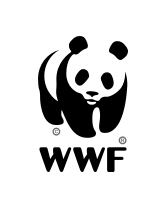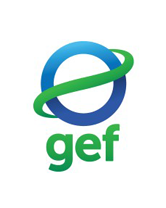Inputs
Deliverables
- Shortlist / final identification of project sites
Title
Determine Sites
For projects with on-ground activities, such as Natural Protected Areas or Marine Protected Areas projects, there should be a well-documented and defensible approach taken to site selection, either at the PIF stage or CEO Endorsement Request Document stage. This can be multi-layered, for example, at PIF, landscapes or NPAs may be selected; at CEO Endorsement Request Document this may be further narrowed down, for example, to areas within a landscape (specific NPAs, production areas, buffer zones, etc.) or areas within an NPA (specific habitats, or specific community areas within a buffer zone).
Ideally, full site selection is completed by CEO Endorsement Request Document Phase II (detailed design) so that the development of activities and budget, consultations with local stakeholders, site specific environment and social management plans, and gender analysis is site-based and targeted.
Process for site selection:
Site selection should be a fully documented and justifiable process, using agreed site selection criteria (see below) and a number of information resources, such as:
- Consultation with experts and identified project stakeholders
- Global databases, for example protected areas: IBAT, World Database on Protected Areas, Key Biodiversity Areas, IUCN Redlist of Threatened Species, Ramsar lists
- National/local databases and information
- Site assessments and consultations, if required
If choosing sites for expansion of protected areas, the Key Biodiversity Area (KBA) methodology should be used.
Considerations for developing selection criteria:
- Consolidate resources. There is often pressure on government agencies or NGOs to “spread the wealth”, i.e., to spread GEF project budget resources to as many sites as possible, and across a number of regions or landscapes, to support multiple constituencies. However, this leads to an approach where budget is spread too thin, and project sites are geographically far apart. This has two key disadvantages: (i) not enough budget for high impact at any one site, and (ii) higher transaction and management/oversight costs to the Executing Agency. As long as it supports the project objective, it is recommended to:
- Select fewer project sites, so there is sufficient budget to bring about impact at each project site, and for economies of scale in administration and management costs. Do not underestimate the logistical challenges and costs of working in remote locations, where sites may be hard to access driving up costs. Keep in mind that the GEF generally measures results in total hectares (for NPAs) or tons of CO2 – not by number of sites.
- Consolidate Activities. Greater impacts will be achieved towards the project goals if activities are focused in fewer sites or sub-sites, rather than dispersing different activities across many different locations.
- Select sites in one region or landscape, so the costs for PMU oversight is minimized by traveling to project sites in close proximity.
- Conditions for successful execution exist. This might include a number of factors that make a site low risk: lack of land tenure conflicts; good relationships with local communities; lack of socio-environmental conflicts or threats (mining, logging, etc.); accessibility to the site; good governance. Feasibility or pre-feasibility studies may be used to, for example, assess resources and conditions for ecotourism.
- Baseline and capacity exist. Following the GEF incremental approach, project sites should have some baseline that will be a foundation from which to build upon with GEF financing. This foundation could be: government staffing and resources; existing or potential partnerships with NGOs, private sector, bi-laterals etc.; strong existing coordination with regional/local/sectoral entities; existing institutions and strategies.
- Multiple global environmental benefits. Selection criteria can include highly biodiverse sites, high potential for carbon storage and/or emission reduction, high potential for reducing land degradation, etc. – as directly related to the GEF focal area(s) and/or Impact Program that is funding the project.
Documentation/Outputs:
In the CEO Endorsement Request Document describe:
- The process that was taken to select sites (e.g., who, corresponding data)
- The selection criteria used
- The final site(s), and provide information on the sites as appropriate, and include a map and coordinates.
If site selection is not finalized in the CEO Endorsement Request Document phase, as is ideal, agree with partners and describe in the CEO Endorsement Request Document what the process will be for finalization of site selection in the early implementation stage. For example, if there is a short list of sites, final selection will be based on xyz criteria and the selection will be made by the Project Steering Committee based on analysis and recommendations from the WWF GEF Project Manager.

